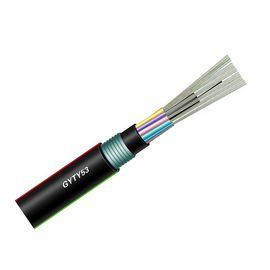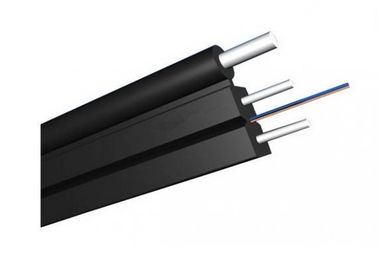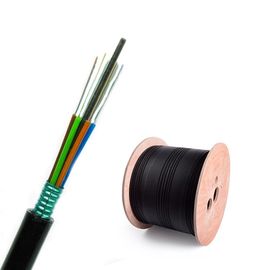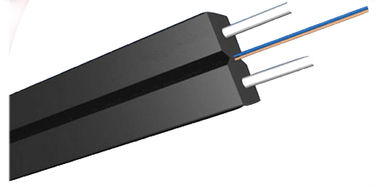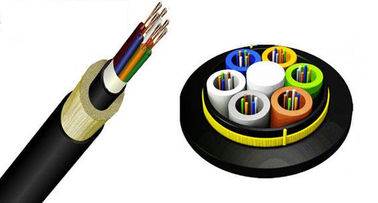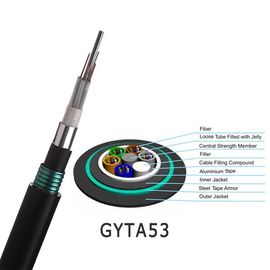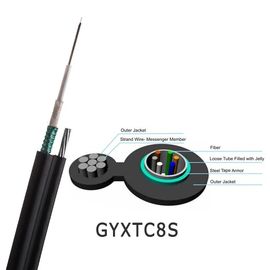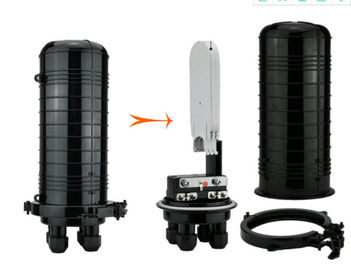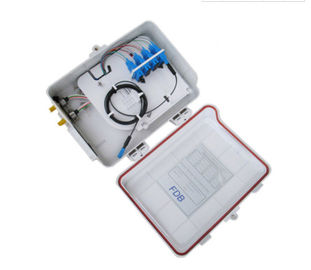A fiber optic cable is a network cable that contains strands of glass fibers inside an insulated casing. They're designed for long-distance, high-performance data networking, and telecommunications. Compared to wired cables, fiber optic cables provide higher bandwidth and transmit data over longer distances. Fiber optic cables support much of the world's internet, cable television, and telephone systems.
How Fiber Optic Cables Work
A fiber optic cable consists of one or more strands of glass, each only slightly thicker than a human hair. The center of each strand is called the core, which provides the pathway for light to travel. The core is surrounded by a layer of glass called cladding that reflects light inward to avoid loss of signal and allow the light to pass through bends in the cable.
The two primary types of optical fiber cables are single mode and multi-mode. Single-mode fiber uses extremely thin glass strands and a laser to generate light, while multi-mode optical fiber cables use LEDs.
Single-mode optical fiber networks often use Wave Division Multiplexing techniques to increase the amount of data traffic that the strand can carry. WDM allows light at multiple different wavelengths to be combined (multiplexed) and later separated (de-multiplexed), effectively transmitting multiple communication streams through a single light pulse.
Advantages of Fiber Optic Cables
Fiber cables offer several advantages over long-distance copper cabling.
- Fiber optics support a higher capacity. The amount of network bandwidth a fiber cable can carry easily exceeds that of a copper cable with similar thickness. Fiber cables rated at 10 Gbps, 40 Gbps, and 100 Gbps are standard.
- Because light can travel for much longer distances over a fiber cable without losing its strength, the need for signal boosters is lessened.
- A fiber optic cable is less susceptible to interference. A copper network cable requires shielding to protect it from electromagnetic interference. While this shielding helps, it is not sufficient to prevent interference when many cables are strung together in proximity to one another. The physical properties of fiber optic cables avoid most of these problems.
Fiber to the Home, Other Deployments, and Fiber Networks
Whereas most fiber optics are installed to support long-distance connections between cities and countries, some residential internet providers have invested in extending their fiber installations to suburban neighborhoods for direct access by households. Providers and industry professionals call these last-mile installations.
Some better-known fiber-to-the-home services in the market include Verizon FIOS and Google Fiber. These services can provide gigabit internet speeds to households. However, they typically also offer lower capacity packages to customers. Different home-consumer packages are often abbreviated with these acronyms:
- FTTP (Fiber to the Premises): Fiber that's laid all the way to the building.
- FTTB (Fiber to the Building/Business/Block): The same as FTTP.
- FTTC/N (Fiber to the Curb of Node): Fiber that is laid to the node but then copper wires complete the connection inside the building.
- Direct fiber: Fiber that leaves the central office and is attached directly to one customer. This provides the greatest bandwidth, but direct fiber is expensive.
- Shared fiber: Similar to direct fiber except that as the fiber approaches the premises of nearby customers, it splits into other optical fibers for those users.
What Is Dark Fiber?
The term dark fiber (often spelled dark fibre or called unlit fibre) most commonly refers to installed fiber optic cabling that is not currently in use. The term sometimes also refers to privately operated fiber installations.
Frequently Asked Questions
- Is fiber optic better than cable? Better depends upon your perspective. Since no electricity is involved, fiber optic internet is less likely to shut down during a power outage than other types of high-speed internet. Along with being more reliable, fiber optic internet is also faster—and more expensive—than traditional internet cables.
- How fast is fiber optic internet compared to cable internet? Cable technology currently supports approximately 1,000 Mbps of bandwidth, while fiber optic internet supports speeds of up to 2,000 Mbps. At 1,000 Mbps, you can download a 2-hour HD movie in about 32 seconds. At 2,000 Mbps, it takes approximately 17 seconds to download a 2-hour HD movie.
- What are the basic components of fiber optic cable? Fiber optic cable has three essential components: the core, the cladding, and the coating.

 Your message must be between 20-3,000 characters!
Your message must be between 20-3,000 characters! Please check your E-mail!
Please check your E-mail!  Your message must be between 20-3,000 characters!
Your message must be between 20-3,000 characters! Please check your E-mail!
Please check your E-mail! 
